The biggest Canadian gold hoax of all time
A sad tale of misunderstandings, a suspicious turn of events, and an outcome that cemented mineral disclosure for good North of 60 Mining News – January 6, 2023
Last updated 1/5/2023 at 11:15am
Start with the biggest deposit of gold ever reported, add in a dash of remote, inaccessible jungles of Indonesia, and let simmer for almost a decade, and you have a recipe for the largest mining-related scandal in modern history, resulting in the system of standardization regarding mineral reporting for the last twenty years and ideally for many more years to come.
It is easy to forget that the systems by which mining companies in Canada report and display information publicly wasn't always so.
The National Instrument 43-101 is a reporting system for the Standards of Disclosure for Mineral Projects advanced by public companies listed on Canadian exchanges.
More specifically, a codified set of rules and guidelines for reporting and displaying information related to mineral properties owned or explored by companies listed on stock exchanges within Canada, home to 75% of the world's mining companies.
Those in the industry are more than likely very familiar with the process, and it is often compared to the Joint Ore Reserves Committee Code from Australia.
Nevertheless, this failsafe system would find itself being implemented only after the largest mining hoax in Canadian history would come to fruition – a tale that, at first glance, may not be as simple as it appears.
The beginning of the end
According to Visual Capitalist, of the 54 countries where most mining takes place, almost 70% are rated as corrupt and have the majority of fraud. In conjunction with this amount, global research has shown losses from fraud amount to roughly 5.47% of expenditures, a number that has increased 20% since the last recession and possibly more given the age of this data, i.e., 2015.
For the largest 100 mining companies, this is equal to roughly 89% of their total profits.
With that in perspective, the case of Bre-X is one of the largest, if not the most, fraudulent and has become infamous in modern history.
Founded in 1989 by David Walsh, Bre-X Minerals Ltd. began its humble origins as many junior mining companies do – with a small wallet and big dreams.
Once based out of Calgary, Canada, the company was a subsidiary of Bresea Resources Ltd. and originally listed on the Alberta Stock Exchange at roughly 30 cents a share.
This junior exploration company did not make any significant profit before 1993, but at that time, under the advice of geologist John Felderhof, and later vice president of exploration for the company, Bre-X bought land in the Philippines, which appeared to change the company's luck for the better.
Purchasing property in the middle of a jungle near the Busang River in Kalimantan, Indonesia, the initial estimate of the site by project manager and Filipino geologist Michael de Guzman was approximately 2 million troy ounces or roughly 60 metric tons of gold.
To reinforce its appeal and to draw in investors, many mining companies desire to show their project is more reward than risk.
As evidenced by the scandal, however, risk seems to work on a graph where resource size grows, ignoring risk comes in hand.
Hence, using its own independent consulting company, Kilborn Engineering, to draft up a resource estimate for Busang may have created a conflict of interest, but the numbers were too good to pay attention to something like that.
Kilborn's findings, of course, showed insane growth over an extremely short period, swelling to 30 million oz (850 metric tons) in 1995; 60 million oz (1,700 metric tons) in 1996; and finally, 70 million oz (close to 2,000 metric tons).
Furthermore, reports of resource estimates of up to 200 million oz (6,200 metric tons) gold is what truly lit the flame and spread the gold fever.
Although the company never outright claimed the deposit contained that amount, Felderhof did describe the property as having this potential, as corroborated in an interview with Richard Behar of Fortune magazine.
In less than five years, the original penny stock turned Wonka's golden ticket, rose to nearly $300 a share in 1997. By this time, the company had shifted its listing on the Alberta Stock Exchange to the heftier Toronto Stock Exchange and even the NASDAQ.
At its peak, Bre-X had a market capitalization equal to US$4.4 billion, equivalent to US$7.4 billion in 2021.
This was a modern Klondike Gold Rush, and blood had been smelled in the waters.
The sharks arrive
With such a massive deposit now in headlines as the "largest deposit ever discovered," it wasn't long before bigger mining companies took notice.
Several even began making takeover offers, yet to no avail. That is until the Indonesian government caught wind.
Under President Suharto, he recommended that such a small company like Bre-X could not handle such a large deposit alone. He felt that Bre-X owned more of this lode than seemed prudent for such a small inexperienced junior, so suggested that the company share its fortunate surplus with the people of Indonesia and have a major like Barrick Gold Corp. manage some of the work.
Convenient, given that Barrick had direct ties to Suharto's eldest daughter Siti Rukmana.
Bre-X responded by enlisting Suharto's own son Sigit Hardjojudanto on its side; thus, an impasse was created.
To end the contretemps, Suharto family friend Mohamed "Bob" Hasan stepped in to offer all sides a deal.
The American miner Freeport-McMoRan Copper & Gold Inc., once again conveniently led by another Suharto friend, would run the mine and Indonesian interests would share the wealth.
In exchange, Bre-X would hold a 45% interest in the mine and land rights for 30 years.
Hasan, for his pains, would accept a share possibly worth a billion or so. When asked what he was contributing for this stake, he replied, "there is no payment, no nothing. It is a very clean deal."
The clean deal was announced Feb. 17, 1997, and Freeport began its initial due diligence evaluation of the site.
Red-handed?
With the deal in the finalization stages, Freeport went to Borneo to start its drilling, and Suharto was ready to sign the contract after this step, locking in Bre-X's land rights and starting the flood of gold.
In March of 1997, however, Freeport reported that its due-diligence cores, drilled only a meter and a half from Bre-X's, showed "insignificant amounts of gold."
Immediately, Bre-X stock lost almost all of its value.
Freeport would then bring more rock samples to its American headquarters under armed guard, while Bre-X would commission a review of Freeport's drilling. The recommendation: more drilling.
Yet another review that focused on the chemical assays is what finally caught Bre-X's throat, postponing the finalization signature from Suharto.
Bre-X, in a novel strategy for the time, blamed the internet. Despite preparing a gilded website that allowed one to generate their own Bre-X stock chart to follow its meteoric rise, it also had data showing the equally meteoric rise of the estimated gold resource – combined, those two pages infected anyone with gold fever.
Nevertheless, Walsh told a Calgary Herald reporter that the meltdown began when scurrilous local rumors in Indonesia were "picked up by one of the ghostwriters on the Internet on the chat page or whatever."
Keep in mind that this was in the 90s. Information was not necessarily as readily available as it is today, a tweet couldn't make it across the world in microseconds, and telephones were limited to continents without tedious and obscure international calls or satellite phones with a built-in backpack.
Hence, reviews of the resource would continue for another month. In the meantime, disquieting details began to come to surface as industry journalists soon found evidence that the Busang ore samples had been "salted" with gold dust.
Actually, red herring
Now you might be asking yourself, how did this scam grow to such magnitudes?
An easy answer would be that the initial proposition to buy land in the middle of the jungles of Indonesia was suspicious and, therefore, in need of scrutiny, so maybe take it with a grain of salt.
Perhaps it was an elaborate plan devised by Felderhof, who history will possibly paint as the mastermind as he was the only executive to face prosecution for the gold hoax. Even though he was fully acquitted of all charges, public opinion and memory often do not care what the law decides.
Perhaps he and Bre-X CEO Walsh were in cahoots. Maybe the unfortunate de Guzman had a part to play, with his presumed guilt-ridden conscious driving him to leap from a helicopter.
However, reality is more often than not stranger than fiction.
On Friday, April 11, Northern Miner magazine put out a "news flash" on its site laying out three lines of evidence that it was Bre-X themselves that had been duped.
• First, contrary to company statements, the Busang core samples had been prepared for assay in the jungle, not in the testing lab. A videotape made by a visitor to the field site showed the humble machines common in assay labs-hammer mills, crushers, and sample splitters. Well-labeled sample bags clearly had finely crushed ore in them. Security was lax enough that samples could easily have been spiked with gold.
• Second, the local inhabitants began panning for gold in the Busang River, but in two years they never found any. Yet Bre-X claimed that gold was visible, a sign of unusually rich ore. And de Guzman's technical report, confusingly, called the gold submicroscopic, which is typical of hard-rock gold ore.
• Third, the assayer that tested the samples said the gold was predominantly in visible-sized grains. Also, the grains showed signs consistent with being typical river-panned gold dust, such as rounded outlines and rims depleted in silver. The assayer dodged the 64-billion-dollar question, saying that there were indeed ways for hard rock gold grains to acquire the rounded edges-but that argument was a fig leaf.
With this information, the curtain began to quickly fall on this rising mining star. You see, many years later, it came to light that in the initial drill results, de Guzman had been filing his wedding ring and mixing the flakes in the crushed core samples.
Perhaps trying to artificially inflate the prospect and make some easy money from investors before quietly disappearing, or for countless other reasons, the world may never truly know. But it can safely be assumed that not even de Guzman could have predicted the global fever that Busang would have created.
Keeping up the charade, de Guzman used realistic ratios of gold to rock to not set off alarm bells and to keep the project moving forward. After that, for the next two and a half years, he would buy roughly $61,000 in panned gold from locals to use in salting.
Even as independent auditors sent by institutional investors found discrepancies between the supposed "panned" gold that had rounded edges, de Guzman explained it was because of the "volcanic pool" theory.
To add to the intrigue, de Guzman, Felderhoff, and Walsh sold off a small portion of their options for roughly $100 million – all before the attention of the Indonesian government.
Death knell for Bre-X
In the months before the Indonesian government practically strongarmed Bre-X into selling its holdings, even going so far as to revoke its permits, a fire at Busang destroyed much of the sample records.
In spite of this, the dealings still go through, and Freeport heads over from America to conduct its testing.
It was at this time that, on his way to meet the Freeport due diligence team, Michael de Guzman exited his helicopter at almost 1,000 feet in the air-an apparent suicide.
With the cat out of the bag, a storm of securities lawsuits arose from the rubble of Bre-X, which the company vigorously protested that it was just an unfortunate series of misunderstandings. Nevertheless, it was too late.
The collapse of Bre-X cast a cloud over the gold mining industry that lasted into the next century.
In the ensuing months, former CEO David Walsh decamped to the Bahamas, where he would pass from an aneurysm in 1998.
Former VP of Exploration John Felderhof would eventually be tried for securities fraud but would be fully acquitted in 2007. Although it came to light that he sold part of his stock holdings for $84 million in the months before the scandal hit, he was not a criminal, just oblivious to the fraud.
And finally, although unsubstantiated, reports were made of the deceased de Guzman being seen in Canada.
According to journalist John McBeth, a body had gone missing from the town's morgue from which the helicopter flew. While a body was recovered, it was reported as having its hands and feet surgically removed and given that it had been discovered four days after the reported suicide, it ultimately was difficult to identify given it had been eaten by wildlife.
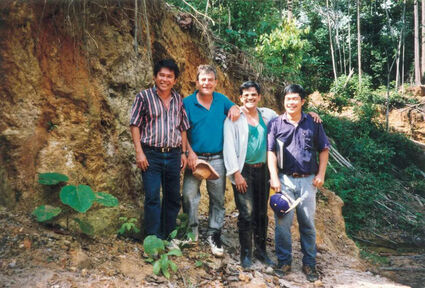
The Canadian Press
A 1996 photo taken at Bre-X Minerals' Busang project in Kalimantan, Indonesia. From left to right – Jerry Alo, project metallurgist; John Felderhof, VP Exploration; Michael de Guzman, exploration manager; Cesar Puspos, geologist.
In addition to the only individual reporting the body as possibly being de Guzman was a former colleague and one of numerous women claiming to be de Guzman's wife receiving payments long after his death, perhaps there are some truths to the matter.
Fun speculations aside, the only benefit from this unfortunate series of events was the system of rules and guidelines for reporting and displaying information related to mineral properties in Canada – the National Instrument 43-101.
Every junior and major that involves itself in the mineral exploration business reports its numbers. Available on a public website for anyone willing to read (sedar.com); it has been an entire generation and then some for many to forget that it wasn't always around and to perhaps avoid another devastating scandal to mar the mining industry; it helps to be reminded.
While the story eventually spun out a Hollywood movie that garnered a lukewarm reception, despite starring the legendary Matthew McConaughy, the old adage goes, "those who cannot remember the past are condemned to repeat it."


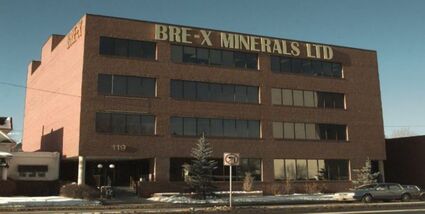
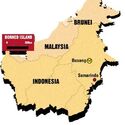
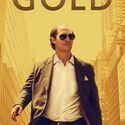
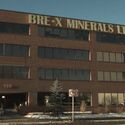
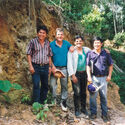















Reader Comments(0)